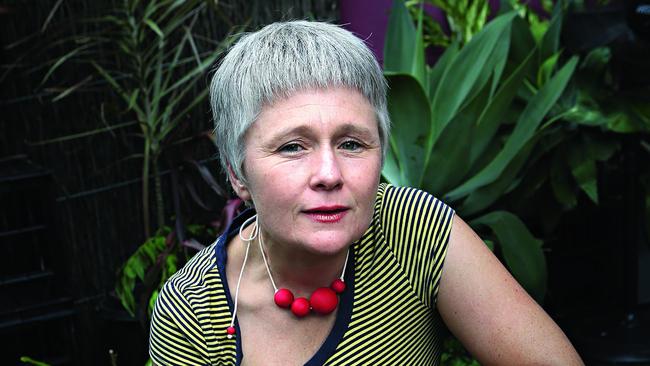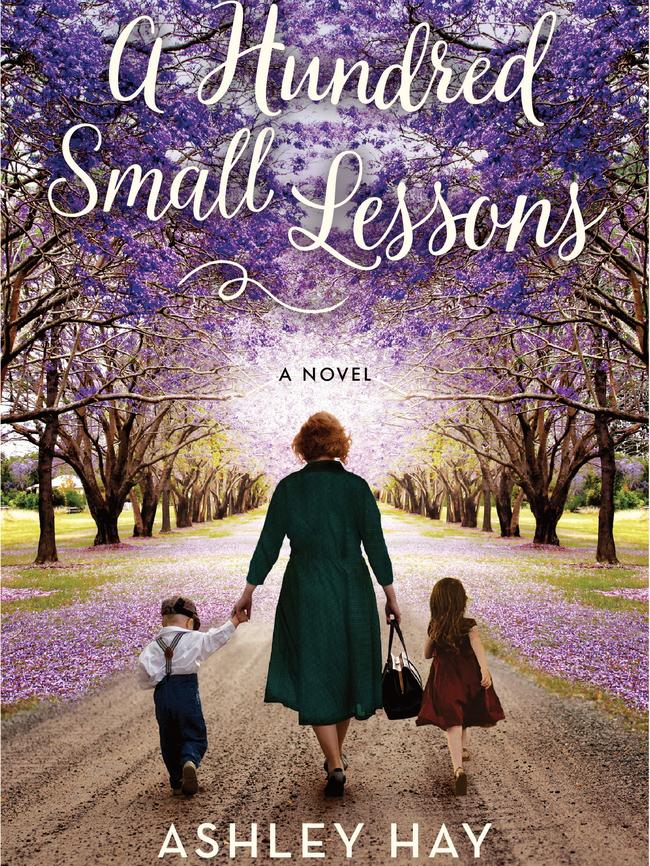Ashley Hay’s A Hundred Small Lessons: love letter to Brisbane
Ashley Hay renders the small details of an undramatic, decent life with tenderness that is touching and compelling.

In this era of soaring house prices and desperate first-home buyers, it’s very brave or very silly to centre a contemporary Australian novel on the concept of property ownership. Puzzlingly, the newly married couple of Ashley Hay’s A Hundred Small Lessons purchase a large piece of riverside real estate without so much as mentioning the huge mortgage they have presumably signed up for. The sense of wonder increases when you learn that one of them does not work, and the other — scarcely less precariously — is a newspaper journalist.
Then again, Hay’s third novel is openly nostalgic for a time when such things seemed possible. And her investment in the national literary tradition of exalting the white picket fence is surely forgivable, not least because the 1940s Queenslander around which her plot revolves brings to mind those wooden structures on stilts venerated by another Brisbane writer with property preoccupations, David Malouf.

A Hundred Small Lessons is a throwback in more ways than one because it focuses not only on the lives of neophyte Brisbaners Lucy and Ben, but also on the former mistress of their newly acquired property, Elsie Gormley. Elsie and her late husband, we learn, purchased the house when it was first built and lived there for 60 years.
In her old age, Elsie has been relegated to a nursing facility because of failing health; her beloved weatherboard is now in the hands of newcomers with unimaginably different lives. Hay’s novel deftly mixes the old woman’s misty memories of the house’s former splendours and her sadnesses with it present predicaments.
Although her assisted living facility might be a bit of a purgatory, 89-year-old Elsie is not dead yet. And the elder woman haunts her young successors like a ghost, her memories and experiences imprinted on their house in eerie ways. They replace the wallpaper, move in their own furniture, repaint the door, replant the garden — but cannot shake the sense that they are intruders, impostors of some kind.
To her husband’s initial amusement and subsequent concern, Lucy begins to imagine the old woman is making midnight visits, breaking in and checking up on them, stealing things. And Elsie, too, dreams of giving her nurses the slip and revisiting her old dwelling place in the dark.
The cover art makes it clear that this is a book intended (at least by its marketing team) for women. So it is natural enough that women’s stories take centre stage, with occasionally acute sadness.
There is Lucy, stuck at home with a toddler in an unknown city while her husband travels frequently for his work. She, who was once a lover of travel and music, finds herself at odds with a world of diapers and Duplo sessions and starts to question the choices she’s made: a house in the suburbs, having a child, marrying in the first place. In her boredom and increasing paranoia, she wistfully contemplates the life of her new home’s former owner and is soon openly fantasising about what it was like.
The reader does not have to fantasise. Trapped in the confines of a bland serviced apartment where the only visitors are children and grandchildren who appear to find her burdensome, Elsie regales us with tales of raising a family in the 1950s, 60s and 70s. She was in her day a far happier housewife than Lucy has turned out to be. Elsie seems at first to possess nothing but fondness for the past. She grieves for her devoted husband, who died suddenly while still relatively young.
She hopes the newcomers are taking adequate care of the house in which they raised twin children. She recalls the 1974 Brisbane flood, when she had to bore holes in the wooden floorboards of her much-loved home to drain the muddy water out. Will the new couple know to do the same when disaster looms?
Sixty years of life on the same street also reveals moments where Elsie yearned to break free from the confines of suburbia in the same way that Lucy now does. She once went to a Beatles concert to mend a fractured relationship with her daughter, once caught the eye of a painter and sat for a portrait, once fell a bit in love with someone who was not the honest and loyal man she married.
Hay renders the small details of an undramatic, decent life with tenderness that is touching and compelling.
But our access to the women’s inner lives is admittedly haphazard. There is little in the way of a plot, although despite the action being slow it nods off only occasionally. The best chapters work well as self-contained vignettes, which when pieced together emulate the imperfect art of recalling and retelling the past. The muddle and confusion and intermingling of memory and experience does carry conviction.
Hay’s previous novel, the award-winning The Railwayman’s Wife, is set in the NSW coastal town of Thirroul, once briefly home to DH Lawrence. One Hundred Small Lessons is a love letter to Hay’s home town, the leafy streets of Brisbane. It is a measured piece of writing that works carefully to create pensive and evocative images of time and place and people.
Hay’s prose has a dreaminess that sometimes seems to clash with reality, but then nothing could be more appropriate in a novel about buying a piece of land and making it your own.
Katherine Gillespie is a writer and critic.
A Hundred Small Lessons
By Ashley Hay
Allen & Unwin, 384pp, $32.99


